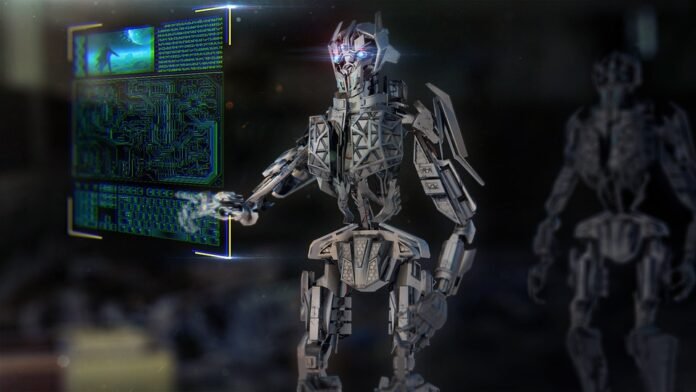Of course. Here is an article on the topic.
The Robot Revolution Is Here. Are You Ready?
Forget the sci-fi fantasies of gleaming androids and apocalyptic machine takeovers. The robot revolution isn’t a distant, cinematic future. It’s here, now. It’s not arriving with a bang, but with the silent hum of servers, the intricate dance of robotic arms in a factory, and the friendly, disembodied voice that tells you the weather. This revolution is subtler, more pervasive, and is already reshaping our world. The real question isn’t when it will arrive, but what’s your place in it?
For decades, the concept of a robot was a bipedal machine, a metallic caricature of a human. But the reality is far more specialized and integrated. The “robots” of today are the autonomous systems quietly transforming every major industry.
In the vast warehouses of Amazon and Ocado, swarms of squat, wheeled robots glide across floors, retrieving and sorting packages with an efficiency that human hands could never match. In the operating room, the da Vinci surgical system allows a surgeon to perform incredibly precise, minimally invasive procedures from across the room, reducing patient recovery time. On our farms, GPS-guided tractors and drones monitor crop health, applying water and pesticides with pinpoint accuracy, maximizing yield while minimizing waste.
And it’s in our daily lives, too. It’s the chatbot that handles your customer service query at 2 a.m., the algorithm that recommends your next binge-worthy show, and the smart assistant that sets your morning alarm. These are all cogs in the growing machine of automation, driven by advances in artificial intelligence, machine learning, and connectivity.
The Great Job Reshuffle
The most immediate and personal concern for most people is, naturally, “What about my job?” The narrative of “robots are coming for our jobs” is both true and misleading. It’s not a simple story of replacement; it’s a story of transformation and reshuffling.
Yes, jobs that are repetitive, predictable, and based on routine physical or cognitive labor are highly susceptible to automation. Assembly line workers, data entry clerks, truck drivers, and even some paralegal and accounting roles are facing unprecedented change. The tasks they perform can often be done faster, cheaper, and more accurately by a machine.
However, this technological shift is also a powerful engine for job creation. For every robot deployed, someone needs to design, build, program, maintain, and repair it. As AI becomes more integrated, we see a rising demand for data scientists, AI ethicists, automation specialists, and user experience designers who can create seamless human-machine interactions. The revolution isn’t just eliminating tasks; it’s creating entirely new ecosystems of work.
The Human Advantage: How to Stay Relevant
Fearing automation is like fearing the tide. A more productive approach is to learn how to swim. The key to thriving in this new era lies in doubling down on the skills that are, for the foreseeable future, uniquely human. Machines are masters of computation and repetition, but they are novices in the realms of genuine creativity, nuanced understanding, and true empathy.
So, how do you prepare?
-
Cultivate Creativity and Critical Thinking: An AI can analyze a million legal documents in a minute, but it can’t devise a novel legal strategy for a unique case. It can generate art in a specific style, but it can’t invent a new art movement. The ability to ask “why,” to solve novel problems, and to think outside the established parameters is a powerful human advantage.
-
Master Emotional Intelligence (EQ): Leadership, collaboration, negotiation, and compassionate care are built on our ability to understand and respond to the emotions of others. A robot can’t genuinely console a grieving patient, inspire a demoralized team, or build the trust necessary to close a complex business deal. Roles in management, therapy, sales, and education will increasingly value high EQ.
-
Embrace Lifelong Learning: The most critical skill of the 21st century is the ability to learn, unlearn, and relearn. The days of finishing your education and working in the same field for 40 years are over. Whether it’s taking online courses to understand data analytics, attending workshops on new software, or simply staying curious, adaptability is your greatest asset. The future belongs to those who see their career not as a static position, but as a continuous process of evolution.
Man With Machine, Not Man vs. Machine
The most successful vision of the future isn’t one where humans are obsolete, but one where they are augmented. Think of it as a partnership. The AI handles the drudgery of data analysis, freeing up the financial analyst to focus on strategic insights. The robotic arm performs the heavy, repetitive lifting, allowing the human worker to handle quality control and complex assembly. The diagnostic algorithm flags potential issues on a medical scan, enabling the doctor to spend more time with the patient, discussing treatment plans.
The robot revolution is not a future to be feared, but a present reality to be navigated. It challenges us to redefine what we value in human work and to invest in our most irreplaceable qualities. The machines are here to take the robotic tasks, freeing us up to be more creative, more strategic, and ultimately, more human.
The revolution is here. Are you ready to lead it?

